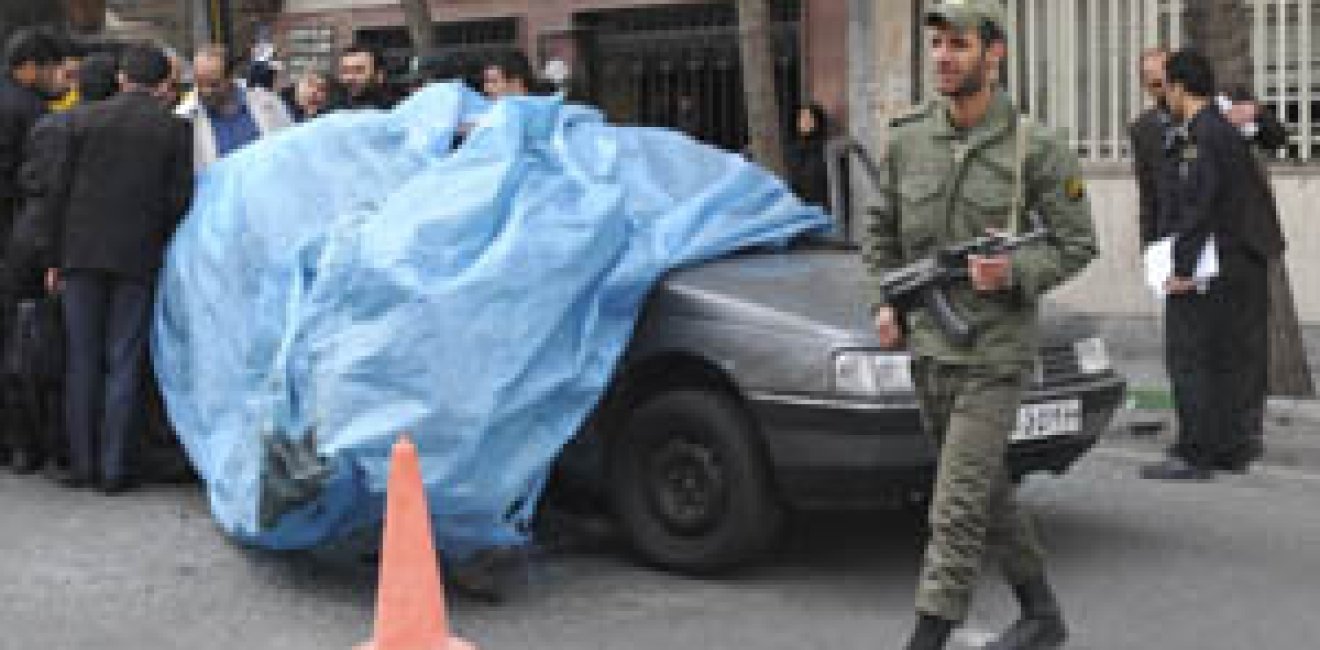The latest suspected assassination of an Iranian scientist is a chilling reminder that the Iranian nuclear crisis is like an iceberg. What you see is already massive and inscrutable, but it is nothing compared with what might be going on beneath the surface.
The question is, just how many tools have countries like the United States and Israel deployed in their quest to keep Iran from getting the bomb? A great deal of creativity is being applied to keep the endgame from being one of two things no one seems to want: Iran getting nuclear weapons or someone attacking the Islamic Republic to stop it from getting them.
The U.S. strategy means Iran’s turning on higher enrichment at its mountain nuclear site at Fordow could be less of a trigger for Israeli military action than had been expected.
The conflict is escalating. It pits an Iran that says it does not seek nuclear weapons and has a peaceful program to produce energy against a suspicious United States. Washington says that if Iran does use its program to go for the bomb, it will be stopped. The killing of the scientist comes as the Iranians have started production of more highly enriched uranium, which can be made into nuclear-power fuel or the explosive core for an atomic weapon, at the Fordow site in Qum province—built into a mountain, and thus well protected from air attacks.
The uranium enrichment shows Iran is clearly defiant, even as the United States and its allies are moving toward powerful sanctions against Tehran’s oil sales as a punitive measure against the Islamic Republic, to rein in its nuclear ambitions. Iran has threatened to close the Strait of Hormuz, the channel through which oil is shipped out of the most prolific oil-producing region in the world, if such sanctions take effect.
While no one will confirm that a covert campaign is being waged, many see such a strategy as just the sort of thing one would want to use against an Islamic Republic believed to be seeking the bomb. The campaign would include the Stuxnet computer virus, allegedly unleashed in 2009 to destroy about a fifth of the centrifuges turning at Iran’s main uranium-enrichment plant in Natanz, and booby traps on equipment Iran buys abroad that ensure the equipment malfunctions once put to use.
And then there are assassinations. The facts from Wednesday: 32-year-old Mostafa Ahmadi Roshan was killed when a motorcyclist attached a magnetized bomb to his car as he was driving to work. Roshan was director of commercial affairs at the Natanz plant. The attack was the fourth of its kind on an Iranian scientist in two years, with three of the men killed and the fourth surviving to become the head of Iran’s Atomic Energy Organization.
Iran has claimed the attacks are terrorism by the United States, Israel, and Britain, but all have denied involvement. The Israeli reaction was bellicose just the same. Israeli military spokesman Brig. Gen. Yoav Mordechai wrote on his Facebook page: “I don’t know who took revenge on the Iranian scientist, but I am definitely not shedding a tear.” Israeli military chief Lt. Gen. Benny Gantz told a parliamentary panel Tuesday that 2012 could be a “critical year” for Iran due to, among other factors, “things that happen to it unnaturally.”
The bottom line is that matters seem to have escalated—with as much heat being applied to Iran as is possible short of war. An Israeli official told journalists in December that it was hoped this pressure might possibly lead to regime change in Iran by the spring. U.S. Secretary of Defense Leon Panetta, who has made confusing comments about U.S. resolve against Iran, tweaked the American position again on Sunday, when he said Iran had not made the decision to develop nuclear weapons but was amassing the capability to do so if it chose to. Panetta said the U.S. red line was that Iran would not be allowed to cross this Rubicon and go on to develop a nuclear weapon. Other states, such as France and Israel, think developing a weapon is exactly what Iran is now doing. But they are going along with Washington so far, as they see tough sanctions and a credible military threat as a way to stop Iran’s suspect nuclear work. Add into the mix alleged covert actions to which no one will admit.
The U.S. strategy means Iran’s turning on higher enrichment at its Fordow nuclear site could be less of a trigger for Israeli military action than had been expected. Iran is believed to have hundreds, rather than the thousands of centrifuges it plans, enriching at Fordow. The centrifuges are not believed to be the advanced type that can churn out enriched uranium faster.
Israel has been concerned that putting centrifuges in such a well-protected site could close the window on possible military action against Iran. But Fordow is not yet fully outfitted. And as a result of the seen and unseen actions against Iran over the past few months, and barring an Iranian move that tips the balance toward hostilities, the U.S. and Israel may be more patient—which offers hope for a solution short of war.
This article was first published on The Daily Beast.




